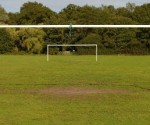Writing Content for Search Engines in 5 Steps [PART 1]
Online publishers have been quick to recognise and monetize this trend, but traditionally, the PR industry has not. Indeed, online publishers, many seeking new revenue models understand they now write for three people; editors, readers and search engines – but too few PRs appreciate the nuanced differences between writing for the web and offline copy.
However, things are beginning to change and the PR industry is wising up to the importance of search along with content as the starting points in the user journey and Edelman (my employer) places it at the centre of the Media Cloverleaf in the deck below.
There clearly are some differences writing for the Internet in comparison to traditional offline copy, so I’ve penned three posts, each with five progressively more complex tips on creating search friendly content that will make your website more indexible and improve your Search Engine Results Page (SERPs).
1. Research
One of the undeniable strengths of digital marketing is the wealth of data and insights available to help you back a winner. Before creating content research Google Analytics for the search terms and keywords people are using to arrive at your site and the popular pages. Are your readers Joe Public or do they have specialist knowledge and use technical language? Are there topics which always do well? To increase online visibility you need to combine what you want to say with phrases and topics that people are searching for, not what you think they are looking for.
Tip – the Google Keyword Tool will offer you more data on search terms frequency
2. Put important content at the top
Pretty self explanatory, but your important content and keywords should be near the top of the page. This includes your title, opening sentences and paragraph.The reason being is that web crawlers start at the top of your page and work their way downwards. Whilst they will definitely start at the top, there’s guarantee they’ll reach the bottom. So if you’re interested in increasing your web visibility put the wittier or ironic lines at the bottom and bring keywords to the top of the page as Google hasn’t figured out humour (yet).
3. Headlines
In order for content to be easily identified by Google as important, maximise the use of headlines. You can signal to search engines important keywords by making them headings. Not only that, ensure where possible headlines are a different font size and bold, this again makes things standout for Google web crawlers.
4. Internal links
Don’t be afraid to link internally to content you have previously written; this is good for search and driving traffic to posts. However, make sure that your links are clear and contain keywords. In the case of this blog, Personal SEO and e-portfolios would better than ‘ways students look after their online reputation’. Links that contain keywords signal to Google what type of content can be found on your site and helps its crawler navigate around your site
5. Create external links
Same as above, but link externally to other high ranking websites and blogs to increase search visibility. This is because external links help Google understand what websites you associate yourself with. For instance, three example would be social media news, online reputation management and blogger outreach tips.















Informative article! I’ve been wanting to deepen my knowledge of SEO, as it is an interesting new aspect of the PR field. This article helped answer a lot of my questions!
Thank you, Dawn!
There’s two more parts to this post, so be sure to check back over the coming weeks for more search tips and advice 🙂
Thanks,
Ben
[…] This realisation has had a big impact on organisations and many now know if they want their content to have the best chance of being shared, commented upon or ‘Liked’, Google bots needs to be more than an afterthought. That’s why I have put together the second of a three part guide on writing content for search engines (you can find Writing Content for Search Engines in 5 Steps here). […]